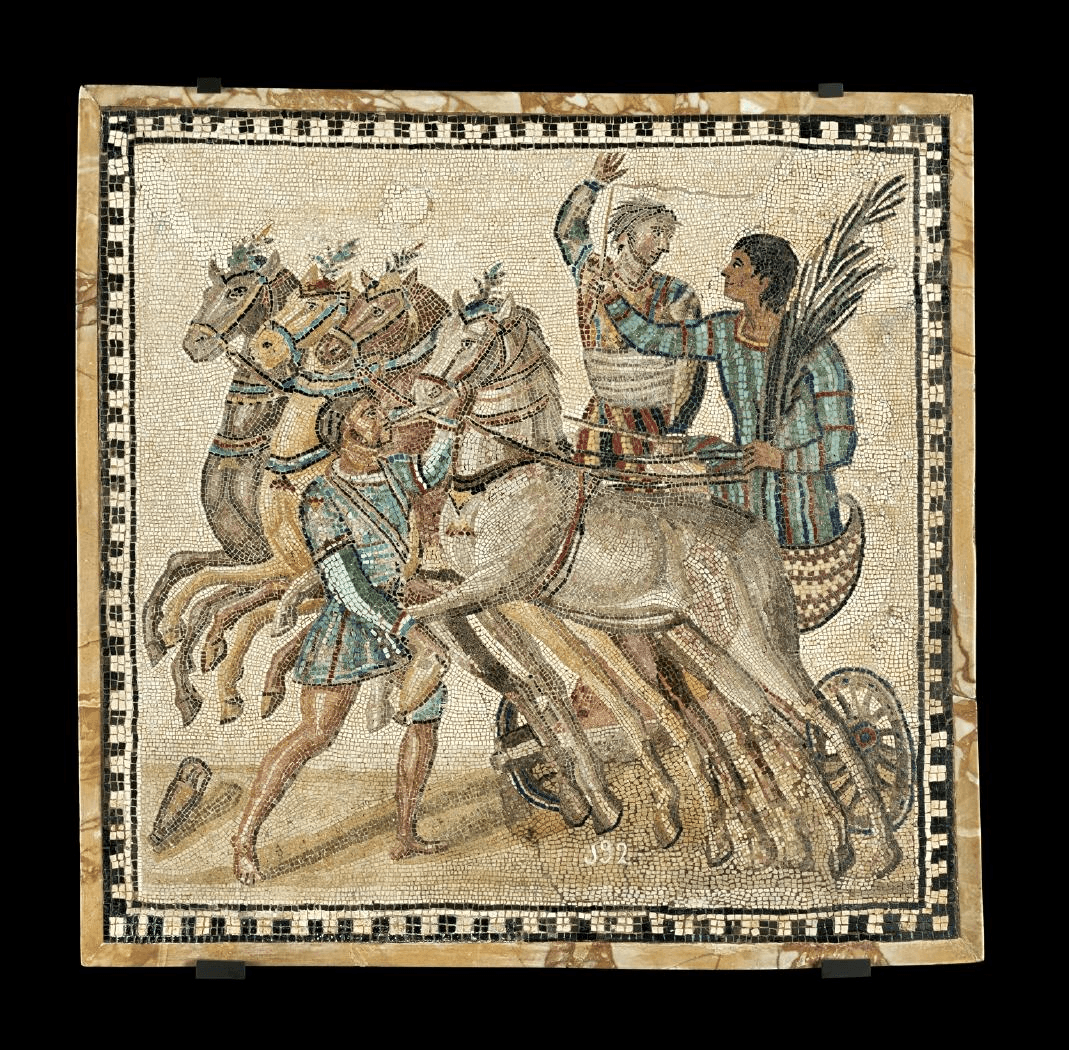Enslaved Within the Hippodrome: Slavery, Manumission, and Charioteer Rebellions in the Later Roman Empire
- Lecture
- Ticket Required
John C. and Sally S. Morley Family Foundation Lecture Hall

Detail of mosaic with quadriga, 200s CE. Museo Arqueológico Nacional, Madrid, Spain. Photo: Google Arts & Culture
About The Event
We know that charioteers were the star athletes within the late Roman world, but what was the legal status of charioteers within the hippodrome? Historians of ancient sport today continue to debate whether charioteers in the later Roman Empire were predominantly enslaved, freed, or freeborn, and whether they experienced the legal status of infamia (infamy). A look at the more than 200 epitaphs and commemorations for Roman charioteers indicates that most began as enslaved persons and were then eventually manumitted around age 30. How does this knowledge change our understanding of how Roman charioteer factions functioned in the political sphere in the late Roman world? This talk looks at the status of charioteers and their role within larger associations called circus factions to show the agency, leadership roles, collective actions, and political clout of enslaved and freed persons within late Roman factions from Diocletian in 284 CE until the death of Heraclius in 641 CE.
Sponsors
This lecture is made possible by the Julius Fund.
All education programs at the Cleveland Museum of Art are underwritten by the CMA Fund for Education. Principal support is provided by Dieter and Susan M. Kaesgen. Major annual support is provided by Brenda and Marshall Brown, David and Robin Gunning, Eva and Rudolf Linnebach, Gail C. and Elliott L. Schlang, Shurtape Technologies, and the Kelvin and Eleanor Smith Foundation. Generous annual support is provided by an anonymous donor, Gini and Randy Barbato, the M. E. and F. J. Callahan Foundation, Dr. William A. Chilcote Jr. and Dr. Barbara S. Kaplan, Char and Chuck Fowler, the Giant Eagle Foundation, Robin Heiser, the late Marta and the late Donald M. Jack Jr., Bill and Joyce Litzler, the Logsdon Family Fund for Education, Sarah Nash, William J. and Katherine T. O’Neill, the Pickering Foundation, William Roj and Mary Lynn Durham, Betty T. and David M. Schneider, the Sally and Larry Sears Fund for Education Endowment, Roy Smith, Paula and Eugene Stevens, the Trilling Family Foundation, Jack and Jeanette Walton, and the Womens Council of the Cleveland Museum of Art.